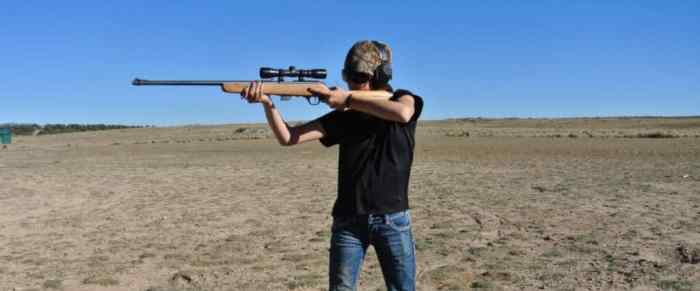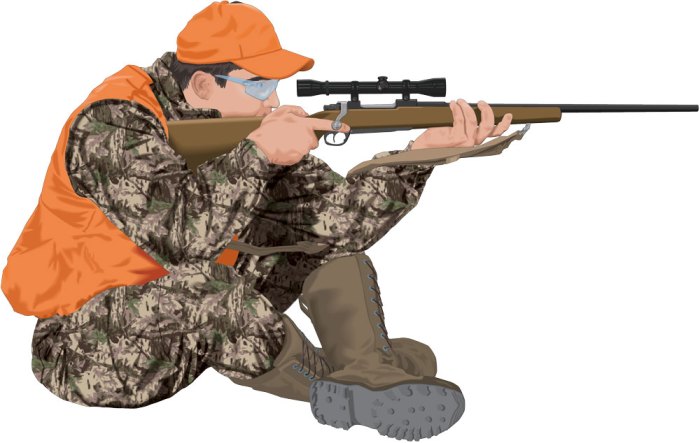There are four standard rifle firing positions choose the steadiest – There are four standard rifle firing positions: prone, kneeling, sitting, and standing. Each position has its own advantages and disadvantages, and the steadiest position will vary depending on the individual shooter and the shooting environment.
The prone position is the most stable and accurate, but it can be difficult to maintain for long periods of time. The kneeling position is less stable than the prone position, but it is more comfortable and allows for faster target acquisition.
The sitting position is even less stable than the kneeling position, but it is more mobile and can be used in a wider variety of shooting environments. The standing position is the least stable of all four positions, but it is the most mobile and can be used when there is no time to get into a more stable position.
Rifle Firing Positions

Rifle firing positions are standardized to ensure consistency and accuracy in marksmanship. The four standard positions are:
Prone Position
- Advantages: Most stable, lowest recoil, highest accuracy.
- Disadvantages: Slowest, least mobile, most exposed.
Sitting Position
- Advantages: More mobile than prone, still relatively stable.
- Disadvantages: Less stable than prone, higher recoil.
Kneeling Position
- Advantages: More mobile than sitting, allows for rapid fire.
- Disadvantages: Less stable than sitting, more exposed.
Standing Position
- Advantages: Most mobile, allows for quick target acquisition.
- Disadvantages: Least stable, highest recoil, lowest accuracy.
Steadiest Firing Position

The steadiest firing position among the four standard positions is the prone position. This is because:
Body Contact
In the prone position, the body is in maximum contact with the ground, providing a stable base for the rifle.
Low Recoil
The prone position minimizes recoil, as the body absorbs much of the force.
Increased Accuracy
The prone position allows for precise aiming, as the rifle is supported by the ground and the shooter’s body.
Factors Affecting Steadiness
Body Posture
Proper body posture is crucial for a steady firing position. The body should be relaxed, with the feet shoulder-width apart and the spine straight.
Breathing, There are four standard rifle firing positions choose the steadiest
Controlled breathing is essential. Inhale before aiming and exhale slowly as the trigger is pulled.
Trigger Control
Smooth and consistent trigger control prevents the rifle from moving before the shot is fired.
Environmental Factors
Terrain and weather can affect steadiness. Rough terrain can make it difficult to maintain a stable position, while wind can affect the trajectory of the bullet.
Techniques for Improving Steadiness

Body Posture
Practice maintaining a relaxed and stable posture, focusing on body alignment and weight distribution.
Breathing, There are four standard rifle firing positions choose the steadiest
Develop breathing exercises to control breathing during shooting. Exhale slowly and smoothly as the trigger is pulled.
Trigger Control
Use dry-fire exercises to practice smooth and consistent trigger pulls.
Shooting Accessories
Bipods and shooting sticks can provide additional support for the rifle, improving steadiness.
FAQ Compilation: There Are Four Standard Rifle Firing Positions Choose The Steadiest
What are the four standard rifle firing positions?
The four standard rifle firing positions are prone, kneeling, sitting, and standing.
Which firing position is the steadiest?
The prone position is generally considered to be the steadiest firing position.
What factors affect the steadiness of a firing position?
The steadiness of a firing position is affected by a number of factors, including body posture, breathing, trigger control, and environmental factors such as terrain and weather.